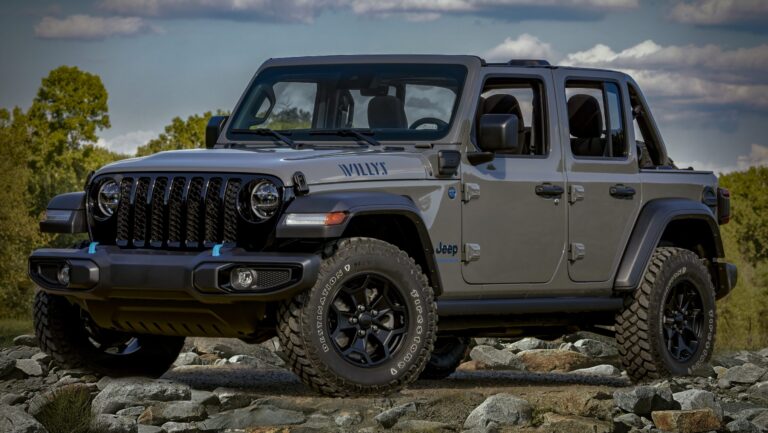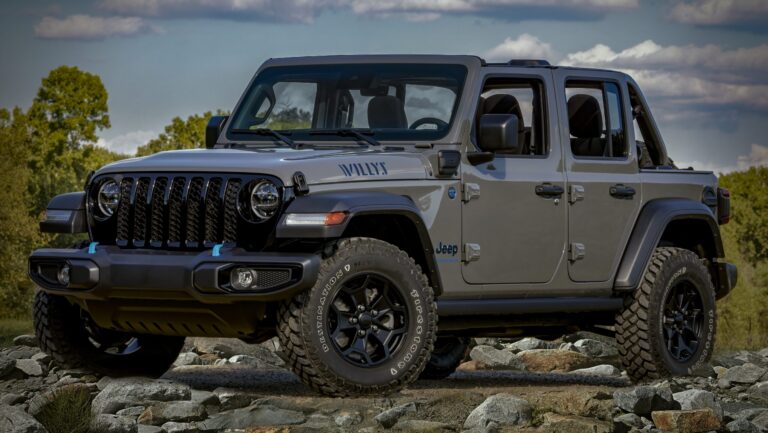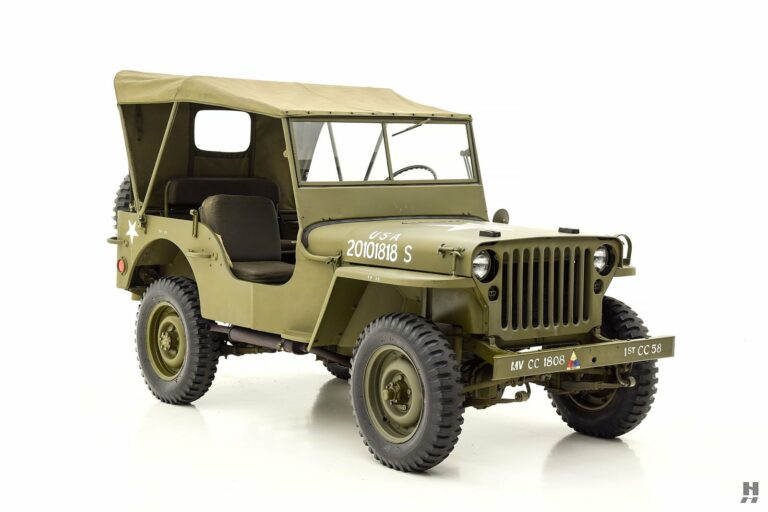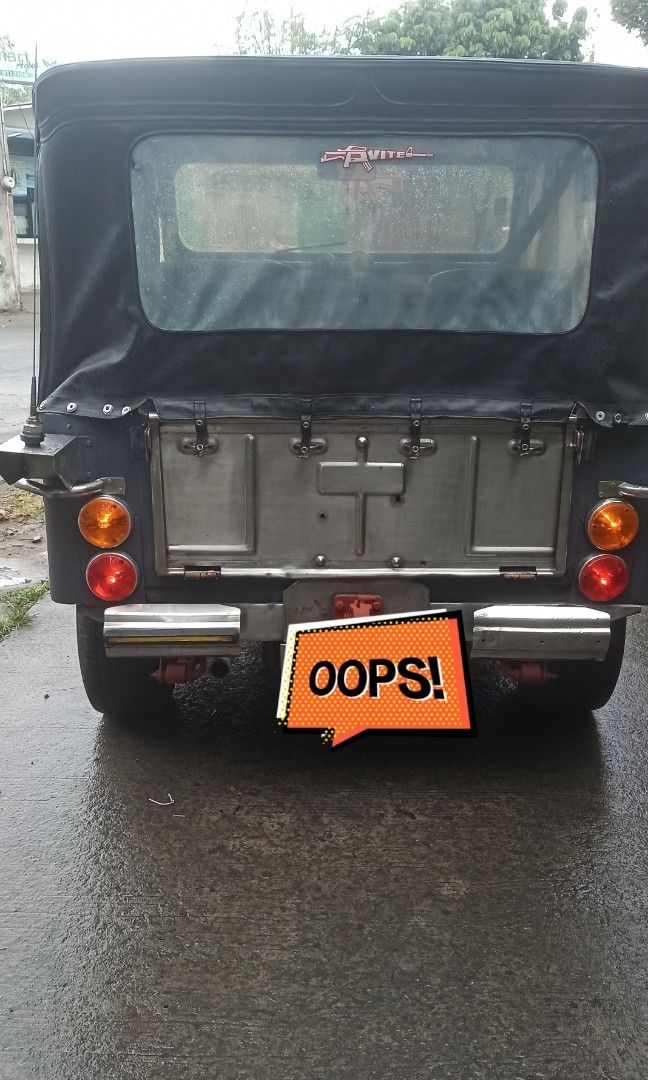Old Postal Service Jeep For Sale: A Comprehensive Guide to Owning a Piece of Americana
Old Postal Service Jeep For Sale: A Comprehensive Guide to Owning a Piece of Americana jeeps.truckstrend.com
Introduction: More Than Just a Mail Carrier
The iconic image of a compact, boxy, right-hand drive vehicle navigating suburban streets, delivering mail with unwavering dedication, is etched into the collective memory of generations. This humble workhorse was none other than the Jeep DJ-5, affectionately known as the "Postal Jeep." Far from being just a utilitarian vehicle, these robust little machines served the United States Postal Service (USPS) for decades, becoming a familiar sight and an integral part of daily life.
Old Postal Service Jeep For Sale: A Comprehensive Guide to Owning a Piece of Americana
Today, the era of the Postal Jeep as a primary mail delivery vehicle has largely passed, replaced by more modern, efficient fleets. However, their legacy lives on, and a vibrant market exists for the "Old Postal Service Jeep For Sale." These vehicles are no longer merely discarded government surplus; they represent a unique opportunity for enthusiasts, collectors, and those seeking a distinctive project or a quirky daily driver. Owning a Postal Jeep means acquiring a tangible piece of American history, a conversation starter, and a platform for boundless customization. This comprehensive guide will delve into every aspect of buying, owning, and enjoying an Old Postal Service Jeep, offering practical advice and insights for both the novice and the seasoned enthusiast.
The Enduring Legacy: History and Evolution of the Postal Jeep
To truly appreciate an Old Postal Service Jeep, understanding its origins and evolution is key. The story begins in the early 1950s when Willys-Overland, the original manufacturer of the civilian Jeep (CJ), developed a two-wheel-drive, purpose-built vehicle for light commercial use, primarily targeting mail delivery. This was the Dispatcher Jeep, or DJ.
The most famous iteration, the DJ-5 series, emerged under Kaiser-Jeep and later American Motors Corporation (AMC). These vehicles were specifically designed for the demands of the USPS:
- Right-Hand Drive (RHD): Crucial for curbside mail delivery, allowing carriers to reach mailboxes without exiting the vehicle.
- Compact Size: Ideal for navigating tight residential streets and cul-de-sacs.
- Simple, Durable Construction: Built to withstand constant stop-and-go driving and varying weather conditions.
- Varied Powertrains: Over the decades, the DJ-5 saw a range of engines, from the early Hurricane F-head 4-cylinder to AMC’s inline-sixes (like the 232 and 258 cubic inch) and later the "Iron Duke" 2.5L 4-cylinder. Transmissions were typically automatics, often a Torqueflite 727 or later versions.
- Basic Interior: Focused purely on functionality, with minimal creature comforts.

The DJ-5 served diligently from the mid-1960s through the late 1980s, becoming synonymous with the postal service. Their eventual phase-out was due to a combination of aging infrastructure, rising maintenance costs, and the need for more fuel-efficient and spacious vehicles. This transition, however, opened the door for these unique vehicles to enter the civilian market, where their distinct character continues to captivate.
Why Buy an Old Postal Service Jeep? The Allure and Benefits

The decision to purchase an Old Postal Service Jeep is often driven by more than just practicality. Here are some compelling reasons and benefits that draw enthusiasts to these unique vehicles:
- Unmistakable Character and Nostalgia: Owning a Postal Jeep is like owning a piece of living history. Its distinct RHD configuration and iconic shape evoke immediate recognition and fond memories for many. It’s a true conversation starter wherever it goes.
- Unique Driving Experience: The right-hand drive setup offers a novel perspective on the road. While it takes some getting used to, it’s an undeniably fun and memorable experience.
- Affordable Entry to Classic Jeep Ownership: Compared to classic Jeep CJs or Wranglers, DJ-5s often present a more budget-friendly entry point into vintage Jeep ownership, especially for project vehicles.
- Customization Canvas: The DJ-5’s simple, robust platform makes it an excellent candidate for customization. From engine swaps and suspension upgrades to unique interior designs, the possibilities are vast. They can be transformed into hot rods, off-road buggies (despite being 2WD), or even quirky promotional vehicles for businesses.
- Simplicity of Mechanics: Earlier models, in particular, feature relatively straightforward mechanical systems, making them approachable for DIY repairs and maintenance. Parts interchangeability with various AMC and GM components can also be a benefit.
- Potential for Investment/Appreciation: While not a high-value collector car, well-restored or uniquely customized Postal Jeeps can hold their value or even appreciate, especially as their numbers dwindle.

Key Considerations Before Purchasing: Navigating the Market
Buying an Old Postal Service Jeep requires careful consideration, as these are vintage vehicles with a history of hard work. Here’s what you need to keep in mind:
- Condition is Paramount: Most Postal Jeeps were retired due to age and wear. Expect rust (especially in floor pans, frame rails, and door sills), worn mechanicals, and neglected interiors. A thorough inspection is crucial. Prioritize structural integrity over cosmetic appeal if you plan a restoration.
- Right-Hand Drive Adaptation: While unique, RHD driving can be challenging initially, particularly for judging distances on the left side of the vehicle and reaching controls typically on the left. Ensure you’re comfortable with this before committing.
- Parts Availability: While many components (engines, transmissions, differentials) are shared with other AMC/GM vehicles, specific DJ-5 body panels, trim, and some unique RHD components can be difficult to source. Reproduction parts are limited.
- Title and Registration: Many Postal Jeeps were sold with a bill of sale or salvage title, as they were decommissioned government vehicles. Verify the title status in your state and understand the process for registering an older or re-titled vehicle. This can be a significant hurdle in some regions.
- Intended Use: Will it be a full restoration project, a daily driver, a show vehicle, or a promotional piece? Your intended use will dictate the level of restoration required and the budget.
- Common Issues: Be prepared for potential issues with braking systems (often drum brakes all around), original wiring harnesses, and the relatively low power output of stock engines.
Generations and Variations: Identifying Your Postal Jeep
While often generically called "Postal Jeeps," the DJ-5 series evolved significantly over its production run:
- DJ-5 (Early Models – Mid 1960s): Often equipped with the Hurricane F-head 4-cylinder engine (from the CJ-3A/5) or the Dauntless V6 (from Buick). Simpler, more spartan interiors.
- DJ-5A/B/C/D (Late 1960s – Mid 1970s): Introduced AMC straight-six engines (232 and 258 cubic inches), offering more power and reliability. Subtle body changes and interior refinements.
- DJ-5E/F/G (Late 1970s – 1980s): Saw the introduction of the General Motors "Iron Duke" 2.5L 4-cylinder engine, primarily for fuel efficiency. These later models often had slightly more enclosed bodies and plastic grilles.
Understanding these variations is important for parts sourcing and assessing potential performance characteristics. The AMC straight-six models are generally favored for their robust nature and easier parts availability for engine-related components.
Where to Find and How to Inspect Your Future Mail Carrier
Locating an Old Postal Service Jeep requires patience and knowing where to look:
- Online Marketplaces: Craigslist, eBay Motors, and Facebook Marketplace are common hunting grounds. Search terms like "Postal Jeep," "DJ-5," or "Right Hand Drive Jeep."
- Specialized Forums and Facebook Groups: Dedicated communities for Postal Jeeps or vintage Jeeps often have classified sections where owners sell their vehicles.
- Government Surplus Auctions: While less common for vehicles in good condition now, some local or federal auctions might still list them.
- Word of Mouth/Local Garages: Sometimes, hidden gems are found through local connections.
Inspection Checklist (Crucial Step):
- Rust, Rust, Rust: This is the number one killer. Check:
- Frame Rails: Especially near suspension mounts and body mounts.
- Floor Pans: Both driver and passenger sides, especially under the pedals.
- Cowl and Windshield Frame: Prone to rot from water ingress.
- Door Sills and Bottoms: Water collection points.
- Cargo Area: Look under any mats or liners.
- Engine and Drivetrain:
- Listen for unusual noises (knocks, rattles, excessive smoke) on startup and during operation.
- Check for fluid leaks (oil, transmission fluid, coolant).
- Test the transmission: Does it shift smoothly through all gears? Does it engage properly?
- Check differential fluid levels and listen for howling noises.
- Brakes and Steering:
- Test the brakes thoroughly. Does the pedal feel firm? Does it pull to one side?
- Check for excessive play in the steering wheel.
- Electrical System:
- Test all lights (headlights, tail lights, turn signals, brake lights).
- Check gauges, horn, and wipers.
- Look for frayed or spliced wiring, which can indicate past issues or fire hazards.
- Suspension and Tires:
- Check shocks and springs for signs of wear or damage.
- Inspect tires for tread depth and cracking.
- Documentation: Verify the VIN matches the title (if available) and ensure there are no liens. A clear title is always preferred.
Restoration and Customization: Unleashing Potential
The true joy of owning an Old Postal Jeep often lies in the journey of restoration and customization. These vehicles offer a fantastic platform for creative projects:
- Rust Repair First: Before any fun upgrades, address all structural rust. This might involve welding in new floor pans, patching frame sections, or even fabricating custom body panels.
- Engine Swaps: The most popular modification. Options include:
- Small Block Chevy (SBC): 350 V8s are common due to their power, reliability, and widespread availability of parts.
- GM 4.3L V6: A good balance of power and fuel economy, often an easier fit than a V8.
- Modern 4-Cylinder: For better fuel economy and modern reliability, options like the GM Ecotec or even a modern Jeep 4-cylinder can be adapted.
- Always consider transmission compatibility and differential strength when planning a swap.
- Suspension and Axle Upgrades: While originally 2WD, some enthusiasts convert them to 4WD using donor Jeep CJ or Wrangler axles. Lift kits are also popular for a more aggressive stance.
- Brake Upgrades: Highly recommended. Converting to front disc brakes (often using donor parts from other Jeeps or light trucks) significantly improves stopping power and safety.
- Interior Overhaul: Replace worn seats, install new gauges, add sound deadening, and consider a modern stereo system. Custom dashboards can also be built.
- Safety Enhancements: Beyond brakes, consider adding modern seatbelts (three-point), a roll bar (if converting to open-top), and brighter lighting.
Challenges and Solutions: Overcoming Obstacles
Owning a vintage vehicle, especially one with a commercial past, comes with its share of challenges.
- Extensive Rust:
- Solution: Professional welding, panel replacement, or learning to weld yourself. For minor surface rust, rust converters and proper priming can work.
- Parts Scarcity:
- Solution: Research cross-compatibility with other Jeep models (CJs, Cherokees), GM, or AMC vehicles. Join online forums for advice on obscure parts. Fabrication might be necessary for unique DJ-5 components.
- Lack of Power/Speed:
- Solution: Engine swap (as detailed above) is the most effective. Regearing differentials can also improve acceleration, though at the expense of top speed.
- Title and Registration Issues:
- Solution: Contact your local Department of Motor Vehicles (DMV) before purchase to understand requirements for registering an older vehicle or one with a salvage/bill of sale history. Some states offer "bond titles" or "reconstructed titles" for vehicles lacking clear paperwork.
- Original Safety Features:
- Solution: Proactive upgrades to brakes, tires, lighting, and seatbelts are essential. Understand that even with upgrades, it’s an older vehicle and won’t have modern safety tech.
Table Price: Old Postal Service Jeep For Sale
The price of an Old Postal Service Jeep can vary wildly depending on its condition, model year, and extent of restoration or customization. This table provides a general guideline.
| Condition Category | Estimated Price Range (USD) | Key Factors Influencing Price |
|---|---|---|
| Parts Car / Salvage | $500 – $2,000 | Not running, significant rust/damage, incomplete. Good for donor parts or extreme custom builds. |
| Running/Driving Project | $2,000 – $5,000 | Runs and drives, but needs substantial work (rust repair, mechanical overhaul, interior, paint). Most common condition. |
| Good Original Condition | $5,000 – $10,000 | Minimal rust, largely original, runs and drives well with minor issues. Could be a light restoration or daily driver with care. |
| Lightly Restored / Driver | $10,000 – $18,000+ | Functional restoration, new paint, interior, minor mechanical refreshes. Ready to enjoy as a reliable cruiser. |
| Fully Restored / Custom | $18,000 – $35,000+ | Frame-off restoration, engine swap, upgraded brakes/suspension, custom interior, show-quality paint. Unique and highly desirable. |
Note: These are general estimates and market conditions, regional demand, and specific vehicle features can cause significant variations.
Frequently Asked Questions (FAQ) about Old Postal Service Jeeps
Q1: Is it difficult to drive a right-hand drive (RHD) vehicle?
A1: It takes some getting used to, especially judging distances on your left side and reaching for controls with the opposite hand. However, most people adapt quickly after a few hours of driving. Practice in a safe, open area before hitting busy roads.
Q2: Are parts readily available for these old Jeeps?
A2: It’s a mixed bag. Many mechanical components (engine, transmission, differential parts, some brakes) are shared with other AMC/GM vehicles and are relatively easy to find. However, specific DJ-5 body panels, unique RHD linkages, and interior trim can be very difficult to source. Fabrication and cross-referencing parts from other models are often necessary.
Q3: Can I make an Old Postal Jeep street legal?
A3: Generally, yes, provided it passes your state’s inspection requirements for safety (brakes, lights, tires, etc.) and you have a clear title or can obtain one. Some states have stricter rules for older or "reconstructed" vehicles. Always check with your local DMV.
Q4: What’s the best engine for a swap in a Postal Jeep?
A4: The most popular choices are the Chevy 350 V8 for raw power, or the GM 4.3L V6 for a balance of power and efficiency in a more compact package. Modern 4-cylinders like the GM Ecotec or Jeep’s own 2.5L/2.4L engines are also viable for better fuel economy. The "best" depends on your budget and performance goals.
Q5: What kind of fuel economy can I expect?
A5: Original Postal Jeeps, especially with the older AMC inline-sixes or the Iron Duke, were not fuel-efficient by modern standards. Expect anywhere from 10-18 MPG, depending on the engine, transmission, and driving style. Engine swaps can significantly alter this, for better or worse.
Q6: Are Old Postal Jeeps safe?
A6: As with any vintage vehicle, they lack modern safety features like airbags, crumple zones, or advanced braking systems. While they are built robustly, their inherent safety is lower than modern vehicles. Upgrading brakes, tires, lighting, and installing modern seatbelts are highly recommended for improved safety.
Conclusion: A Rewarding Journey
Owning an Old Postal Service Jeep is more than just acquiring a vehicle; it’s embracing a hobby, a piece of history, and a community. While these charming workhorses demand attention, patience, and often a significant investment of time and resources, the rewards are immeasurable. From the unique driving experience to the satisfaction of bringing a piece of Americana back to life, the journey of owning and restoring a Postal Jeep is deeply fulfilling. Whether you envision a faithful restoration, a radical custom build, or simply a quirky daily driver, the Old Postal Service Jeep offers a distinct and rewarding path for the automotive enthusiast. It’s a testament to simple, durable engineering and a nostalgic nod to a bygone era of tireless service.







